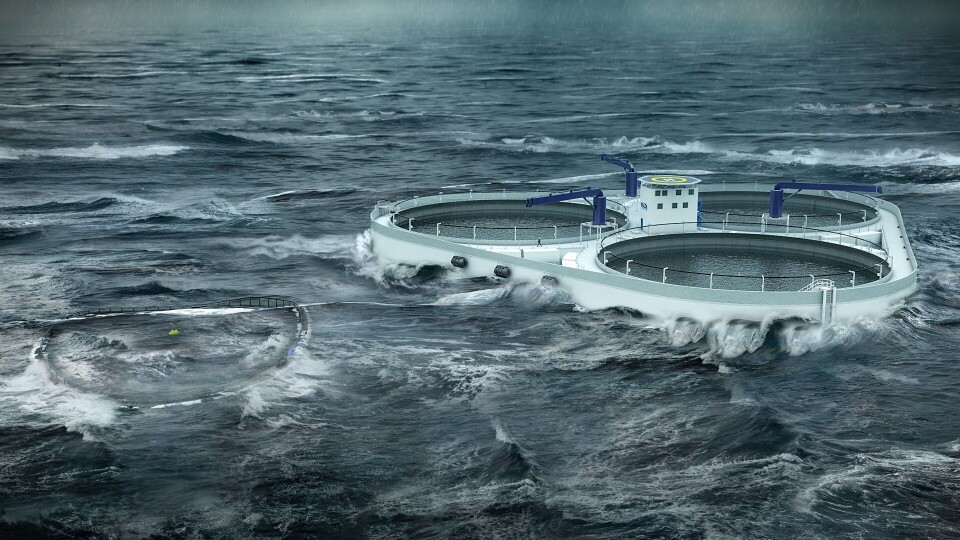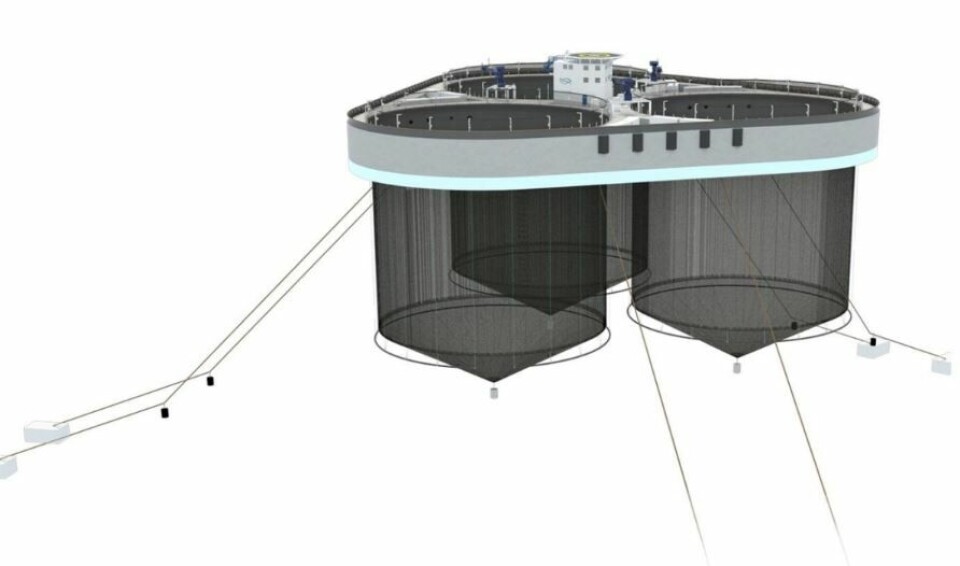
£59m ‘Island Farm’ granted biomass licences
The Norwegian company behind plans for a floating concrete salmon farm designed for exposed locations has been granted permission to grow 3,120 tonnes of fish – half the volume if asked for.
Astafjord Ocean Salmon AS has received four 780-tonne development permits for its ØyMerd (Island Cage) concept from Norway’s Directorate of Fisheries after winning an appeal.
The Directorate initially rejected an application for development permits for the ØyMerd because it believed the concept did not meet the essential criterion of “significant innovation”.

Six-metre wave height
The Ministry of Trade and Industry overruled the decision on appeal and sent the application back to the Directorate to decide on the number of permits.
The ØyMerd is designed for areas with a significant wave height (Hs) of up to six metres.
Astafjord has previously stated that the ØyMerd - which will be built in Norway – will cost NOK 700 million (£59m) and that it has the money.
Concrete platform
The ØyMerd design is a triangular concrete platform 10 metres deep, where 7.5m is under water.
Each of the sides of the ØyMerd is 120m long, and in the centre of the platform is an operating building on three floors. Under the deck there will be storage space, technical equipment and feed silos. The platform has three separate net pens which can each hold 400,000 fish.
In addition, ØyMerd will be equipped with an energy system that prevents ice formation on the deck and along the freeboard.
Astafjord Ocean Farming is a joint enterprise between Troms fish farmers Gratanglaks and Kleiva Fiskefarm and, once built, the ØyMerd will be sited in Troms.






















































